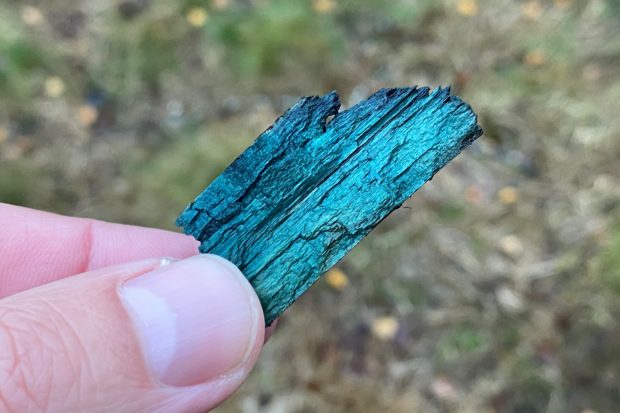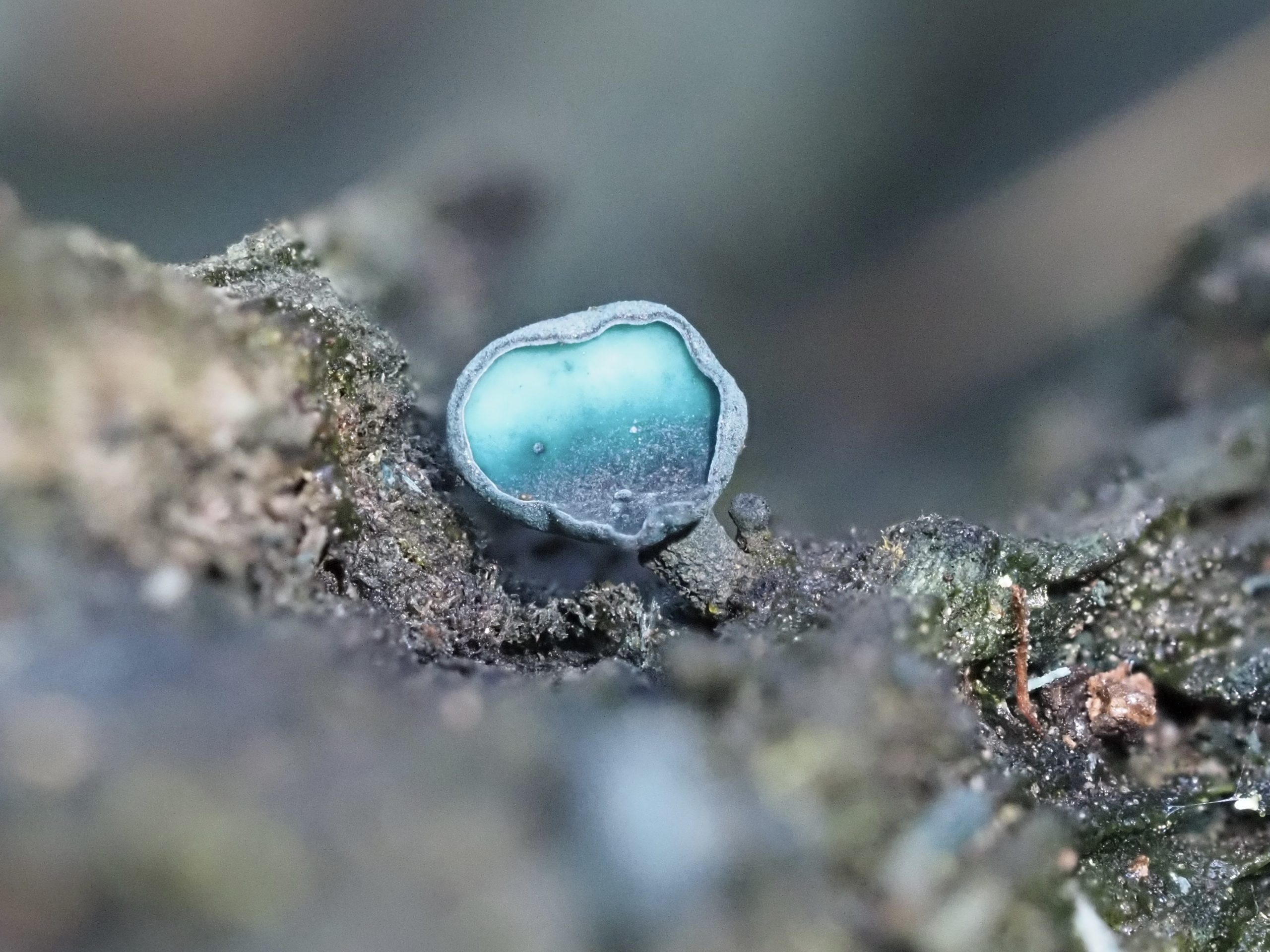Wondering Warden: The Green Elf Cup
At most of the heaths I warden I find strewn bits of broken wood that appear to be ‘coloured in’. I’m wondering if there is a gang of marauding toddlers running round the heaths armed with felt tip pens randomly colouring pieces of wood, or more specifically bits of silver birch and always a turquoise colour? After musing what a fabulous colour it is and how it would look great on one of the walls upstairs, I decide to find out who or what is responsible for all this artwork.
So, after extensive research (a Google or two), I discover it’s not a gang of master colourist toddlers but elves!
Ok, not quite elves but a fungus called Green Elf Cup. In the autumn, these bits of wood will be festooned with little cups and mini bowls as though elves had been at a tea party or beer festival and just got up and left their dishes for someone else to clear up.

Turquoise Silver Birch Bark. Credit: Michael Jones
The main body of the fungus is called the mycelium, which is a network of thread-like filaments called hyphae. These hyphae run up and down the pieces of wood and when the right conditions present themselves, usually autumn time, the fruiting bodies appear as little green cups and bowls.
The Green Elf Cup’s mycelium produces ‘xylindein’, a pigment that turns the wood this striking colour of turquoise. In the 17th and 18th centuries this exotic-looking wood was highly prized by woodworkers, for marquetry, the art of applying pieces of veneer to form decorative patterns. Unlike many artificial dyes of the time, the xylindein pigment was very stable and didn’t fade easily, that made it ideal for heirloom-quality pieces like boxes, furniture, and instruments. Tunbridge Ware became very fashionable in the 18th and 19th centuries for its use of this natural pigmented wood in their intricate mosaic marquetry items such as jewellery boxes and needle cases.
In recent years scientists have discovered that this natural pigment ‘xylindein’ is a semiconductor (and yes, I did have to look that up too)! A semiconductor is a material that can conduct electricity some of the time, depending on conditions. It’s not as conductive as metals, but not as insulating as rubber. Think of it as a “smart” material that controls how electricity flows through it. And where would you use such a ‘smart material’? – in phones, solar panels and computers!

Green Elf Cup fungus. Credit: Michael Jones
Xylindein is a non-toxic molecule with minimal environmental impact during both its synthesis (when extracted or replicated) and disposal. Traditional semiconductors are made of inorganic material like gallium arsenide or cadmium-based and require hazardous solvents.
This literal ‘green’ alternative to traditional semiconductors combines renewability, low toxicity, and electronic functionality, making it a top candidate for sustainable electronics and green tech.
So, when you’re out and about, don’t forget to look on the floor for broken bits of silver birch and see if you have found a piece of natural treasure and marvel at its oddity, beauty, and potential.
Am I a little disappointed that there isn’t a gang of 3-year-olds colouring through the countryside or partying elves, maybe, but the thought of a future where pigmented mycelium networks are the sustainable future of tech is the stuff of Star Trek dreams, and as an original Trekkie nothing tops that!
Warden Paula
Thames Basin Heath Partnership
